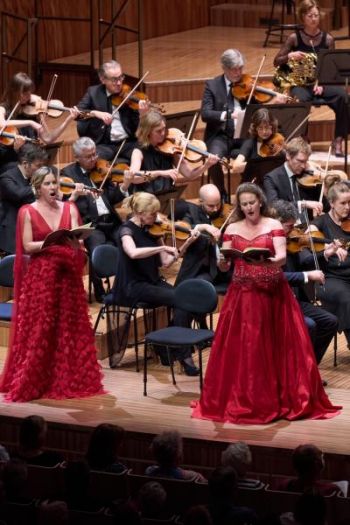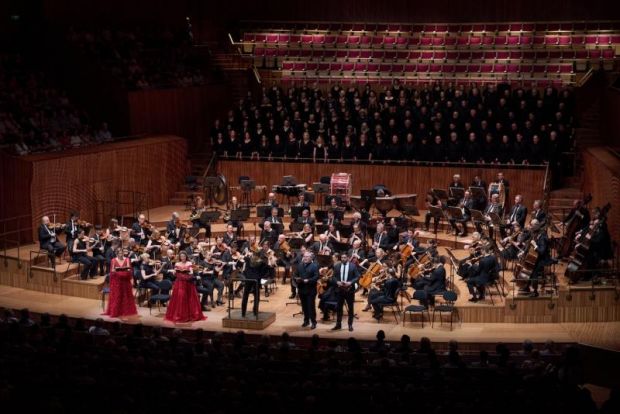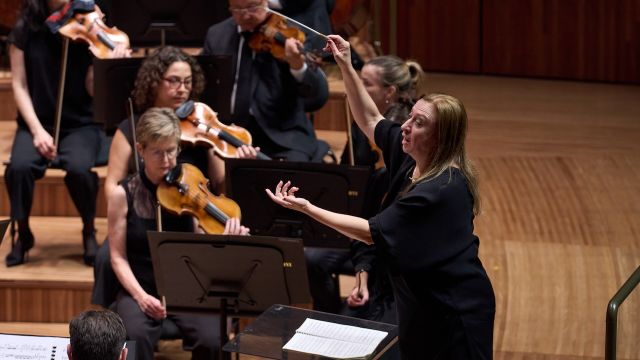Beethoven’s Ninth Symphony
William Barton’s inventive mastery teaming his didgeridoo with classical musicians has been applauded since he was guest soloist in Peter Sculthorpe’s new Requiem 20 years ago.
Now Simone Young, with the SSO and 180 Sydney Philharmonia choristers, present the world premiere of Barton’s own composition Ayatku Muruu (One Country). The meditative 15 minute work is sung in English and his Kalkadungu language, from his country around Mount Isa in Queensland.

It explores its landscapes, nature and the sound of wind through branches and spinifex, but also - suggestive in the choral text - the fragile connection between Western and First Nation worlds. Movements rise and crash into repeated crescendos.
There was no didgeridoo in this premiere, and no William Barton - he was stuck at Melbourne Airport. But his Mum was there, Delmae Barton, a singer and poet herself, and a big influence on William’s musical eclecticism.
Beethoven never looked exactly joyous. Despite his alienating deafness and grumpy and paranoid moods, he long dreamt of setting Schiller’s Ode to Joy into what became the finale of his Ninth Symphony.
The first movement is a musical tabula rasa, shimmering between melodic possibilities interrupted by explosive effects. Musicologists see sex in this movement, with Charles Rosen saying that “Beethoven had found a way of making an orgasm last for sixteen bars.” But I missed it.
The second movement runs with unceasing demonic energy, a rhythm punctuated by brief evocative explorations, and so dramatically visualised in Stanley Kubrick’s film A Clockwork Orange. The third slows to explore beautiful melodies holding back on the brass and drums. It’s when all the choristers rise for the end, and the four soloists arrive - Lauren Fagan, Deborah Humble, Simon O’Neill and Samuel Dundas - that we’ve reached the choral joy, or at least a serious Germanic joy.

Beethoven intended a climax of political joy, for the French revolutionary promise of freedom for humanity. But by the premiere of the Ninth in 1824, he was disillusioned with these ideals and Napoleon.
He considered dropping the massed choir and soloists; instead his glorious symphony is seen now as celebrating a more transcendent sense of brotherhood. Simone Young’s carefully paced, almost balletic conducting never tires, proving, indeed, that the symphony’s final optimism can elevate it into a thrilling work for civic celebration. The SSO played The Ninth at the opening of the Sydney Opera House in 1973.
Martin Portus
Photographer: Jay Patel
Subscribe to our E-Newsletter, buy our latest print edition or find a Performing Arts book at Book Nook.

